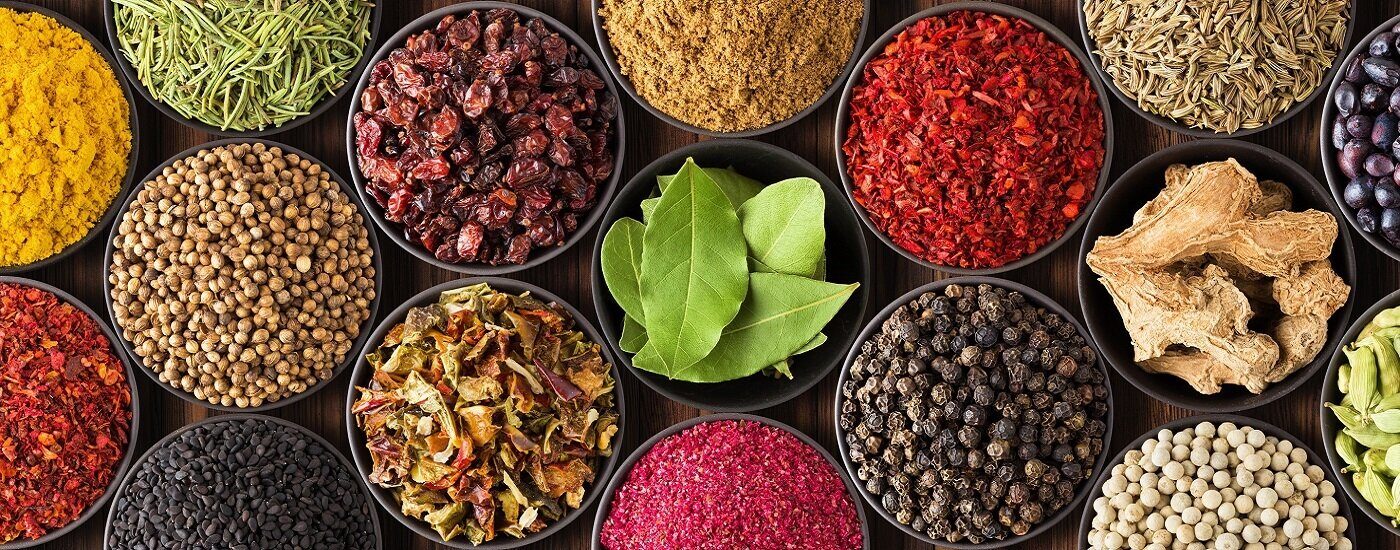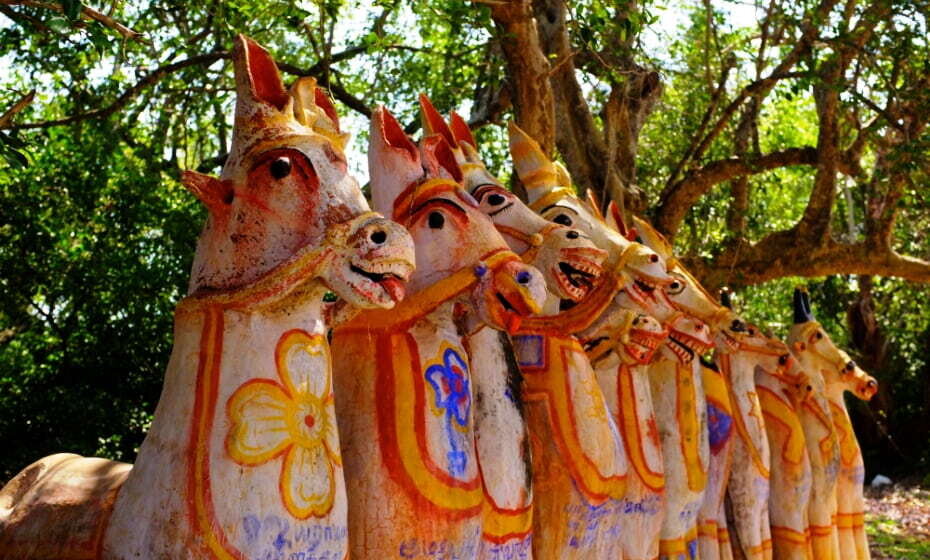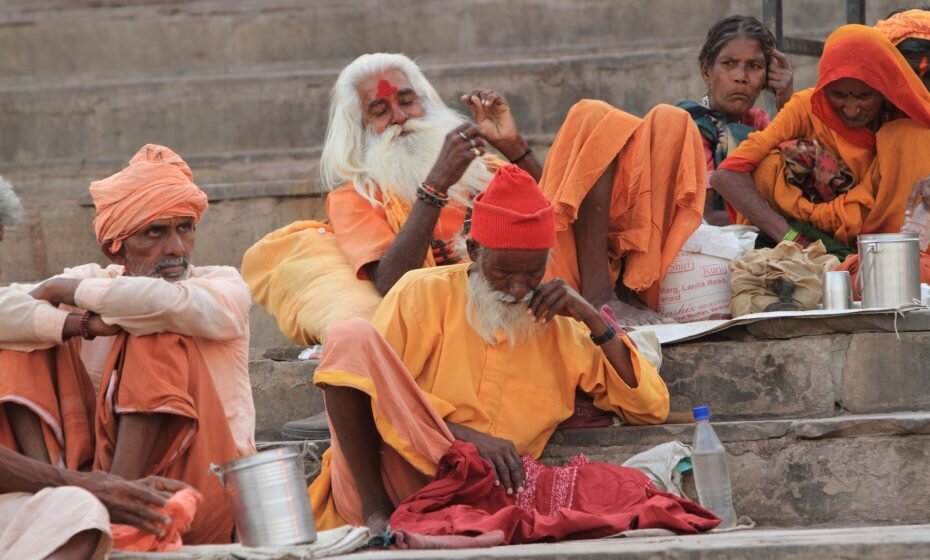Indian food is a medley of exquisite spices, used not only for their amazing flavours but also for their vibrant colours and numerous health benefits.
Indian spices are used chopped, ground or whole; roasted, sautéed or fried; and as a topping. Spices are sometimes added at the end of the cooking process as a flavouring after being heated in a pan with ghee or cooking oil.
Spices with strong flavour should be added first and lighter spices added last.
The term ‘Curry’ is an Indian dish with several spices blended together. This dish could be dry or have a gravy base. In South India, this could also mean the curry leaves themselves are commonly used as an ingredient in this regional cuisine.
Fourteen of our favourite Indian spices
Here are fourteen of our favourite Indian spices used in regional and national cookery to inspire you to spice up your life!
Black pepper
Black pepper, often referred to as the “king of spices,” is one of the most versatile Indian spices that adds a sharp, spicy flavour to dishes. Its pungent taste comes from the compound piperine. Black pepper is used both whole and ground, and it enhances the taste of curries, marinades, and spice blends. Apart from its culinary uses, black pepper is believed to have antioxidant properties and may aid digestion.
Good for:
- Great anti-inflammatory agent
- Relief from respiratory disorders, coughs and colds
- Helps with dental care and digestion
- Helps relieve constipation, anaemia, impotency, muscular strains, dental care, pyorrhea, diarrhoea, and heart disease
How to use:
Whole in a ‘bouquet garni’ in stews, crush, or grind for a milder flavour.
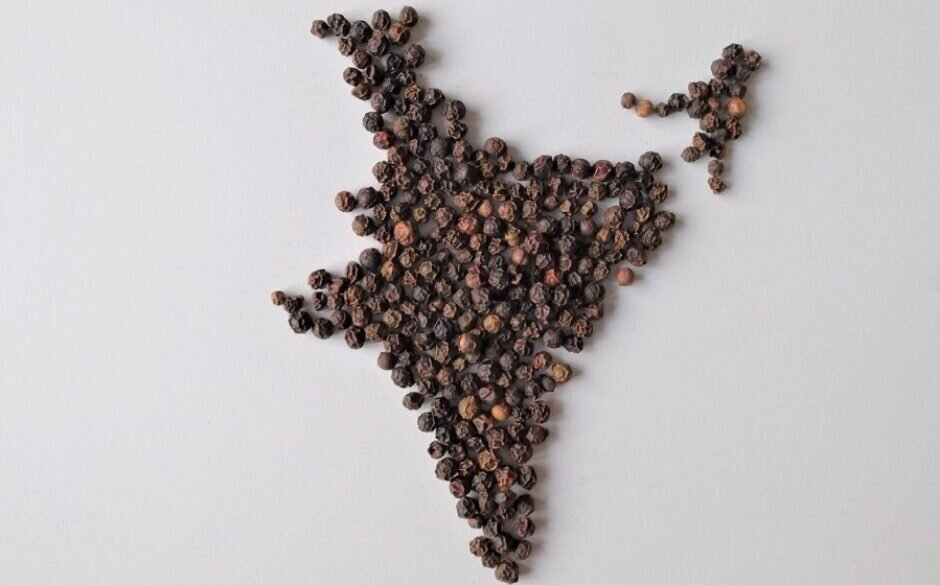
Cardamom
Cardamom, often referred to as the “Queen of Spices,” has a distinctive aroma and a sweet, floral taste. This Indian spice is available in two varieties: green and black. Green cardamom pods are commonly used in both sweet and savoury dishes, imparting a warm, aromatic flavour. Black cardamom has a smokier profile and is preferred in heartier dishes and spice blends. Apart from its culinary uses, cardamom is believed to have digestive and diuretic properties.
Good for:
- Antioxidant and diuretic properties
- May lower blood pressure
- Helps with digestive problems including ulcers
- May lower blood sugar levels
How to use:
Grind the seeds using a pestle and mortar or lightly crush the whole pod for stews and curries. Also great with chocolate!
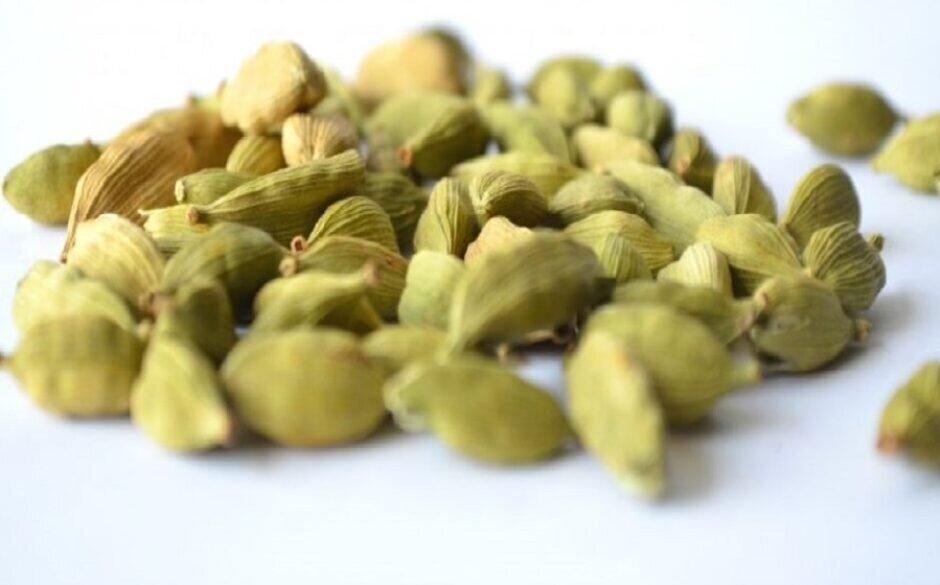
Cinnamon
Cinnamon, with its warm and sweet flavour, is a beloved spice in Indian cuisine. Derived from the bark of the Cinnamomum tree, it is available in both stick and powder form. Cinnamon is used in both savoury and sweet dishes, infusing them with a delightful aroma. It pairs well with cardamom and is a key ingredient in many desserts, rice dishes, and spiced teas. Besides its culinary uses, this Indian spice is known for its potential anti-inflammatory and blood sugar-regulating properties.
Good for:
- Great antioxidant
- Anti-inflammatory properties
- Eases digestion
- May reduce blood sugar and cholesterol levels
- Stimulates blood flow
- Herbal remedy for poor circulation
How to use:
Add whole to casseroles and fruit punches, grind into baking, and sprinkle on custard and fruit.
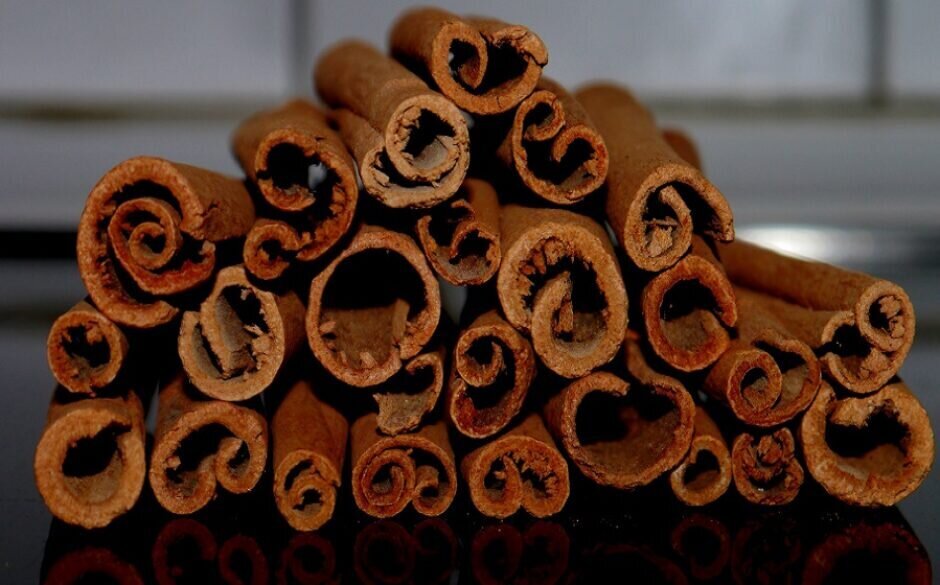
Chillies
Chilli powder is the fiery backbone of Indian cuisine, adding heat and intensity to dishes. This Indian spice is typically made by grinding dried red chillies, and its potency can vary depending on the type of chillies used. Kashmiri chilli powder, for example, offers a vibrant red colour and milder heat. Chilli powder is not only a taste enhancer but also contains capsaicin, a compound known for its pain-relieving and metabolism-boosting properties.
Good for:
- Fighting inflammation
- Natural pain relief
- Boosting immunity
- Clearing congestion
- Can help with weight loss
How to use:
Toss in hot oil, roast on a griddle or cook with water or stock in curries, stews and soups. Available in whole, dried or ground formats.
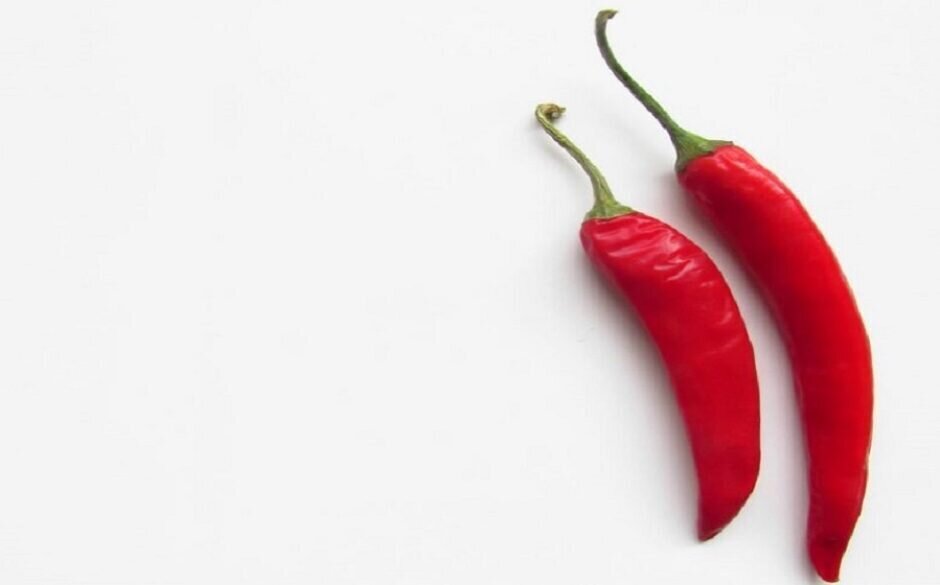
Coriander
Coriander, also known as cilantro or dhania, is a versatile herb used extensively in Indian cooking. Both the seeds and leaves are utilized, each contributing unique flavours. Coriander seeds have a warm, citrusy flavour and are commonly ground into a powder. The fresh leaves provide a refreshing, slightly tangy taste and are used as a garnish or incorporated into chutneys. Coriander is rich in antioxidants and has been associated with various health benefits, including digestive support and cholesterol regulation.
Good for:
- Lowering cholesterol
- Great for the digestive system
- Can stimulate insulin secretion and lower blood sugar levels
- Anti-inflammatory properties
- Great for promoting the nervous system and stimulating memory.
How to use:
Roasted and powdered coriander seeds create flavoursome food, whilst fresh coriander leaves are a staple seasoning and garnish to Indian dishes.
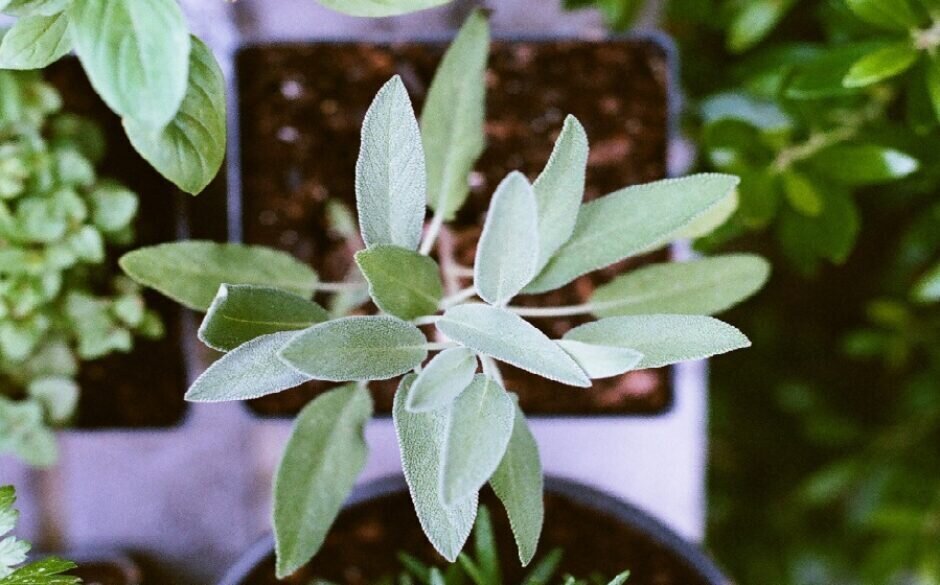
Cumin
Cumin seeds are an essential ingredient in Indian cuisine, providing a warm, earthy flavor and aroma. They are often dry roasted before being ground to enhance their nutty notes. Cumin adds depth to curries, rice dishes, and bread, and it pairs exceptionally well with coriander. This Indian spice is also believed to aid digestion and improve metabolism.
Good for:
- Promoting digestion
- Can help with diabetes
- Improves circulation
- Can help reduce fat and with weight loss
- May improve blood cholesterol
How to use:
Not only added to many dishes, cumin is also included in remedies for cough and cold relief.
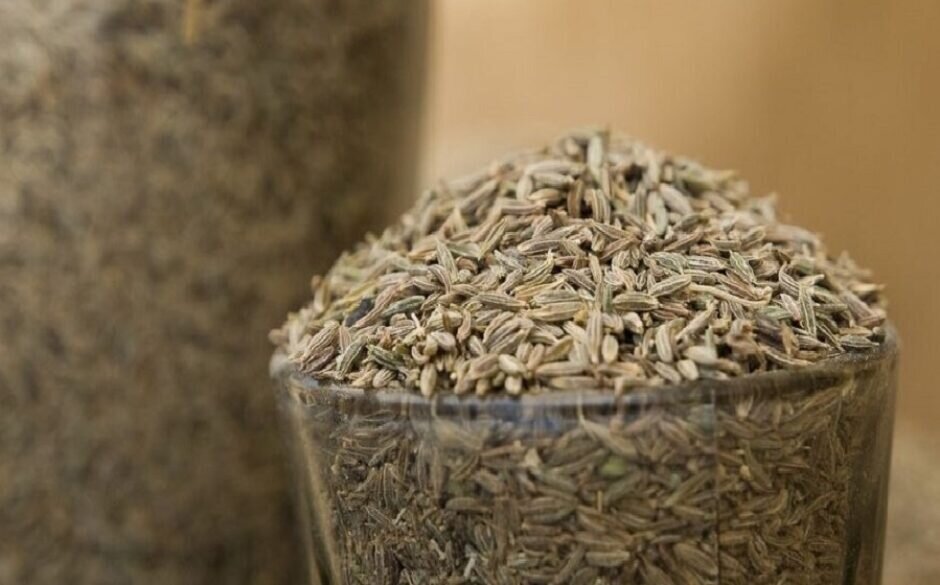
Curry leaves
Curry leaves are a staple in South Indian cooking, imparting a distinct, aromatic flavour to dishes. These shiny, dark green leaves are often tempered in hot oil at the beginning of cooking to release their rich fragrance. Curry leaves are commonly used in curries, chutneys, and rice dishes. They offer a subtle tang and are known for their antioxidant properties and potential benefits for gastrointestinal health.
Good for:
- Treating dysentery, constipation and diarrhoea
- Relives nausea and morning sickness
- Heals wounds, burns and skin eruptions
- Can help with weight loss
How to use:
Add a handful to pretty much any recipe! Dried curried leaves can be added to sambar or mixed rice.
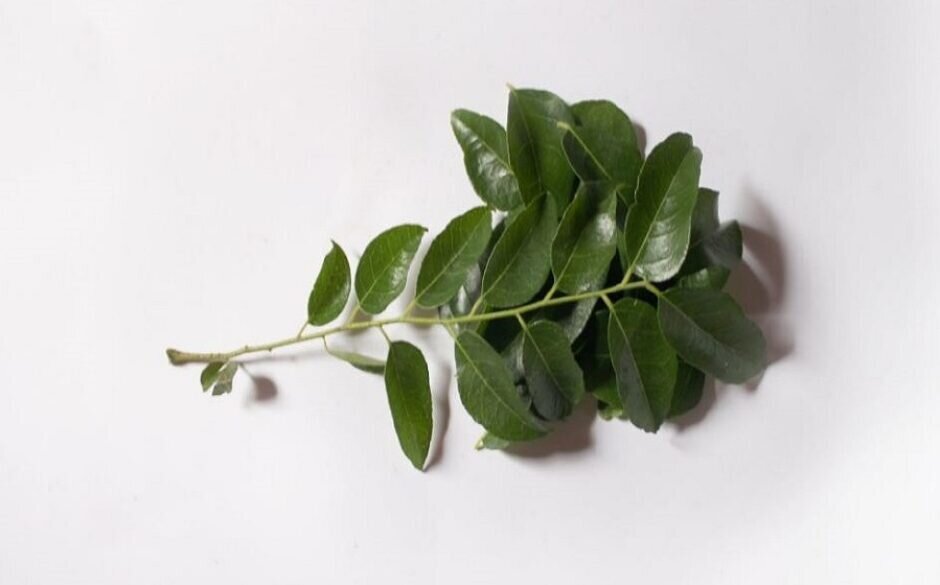
Fenugreek
Fenugreek, or methi, is a herb with small, golden-brown seeds and fragrant leaves. The seeds have a slightly bitter taste and are often dry roasted to mellow the bitterness and enhance their flavour. Fenugreek seeds are commonly used in spice blends and curry powders. The leaves, on the other hand, are used fresh or dried in various dishes, adding a distinctive, slightly sweet aroma. Fenugreek is known for its potential to support digestion, regulate blood sugar levels, and enhance lactation in breastfeeding mothers.
Good for:
- Balancing cholesterol
- Soothing upset stomachs
- Reducing menstrual cramps
- Soothing muscle pain
- Reducing appetite and fat mass
How to use:
Add a dash of fenugreek to anything from curries to salads for a hit of flavour.
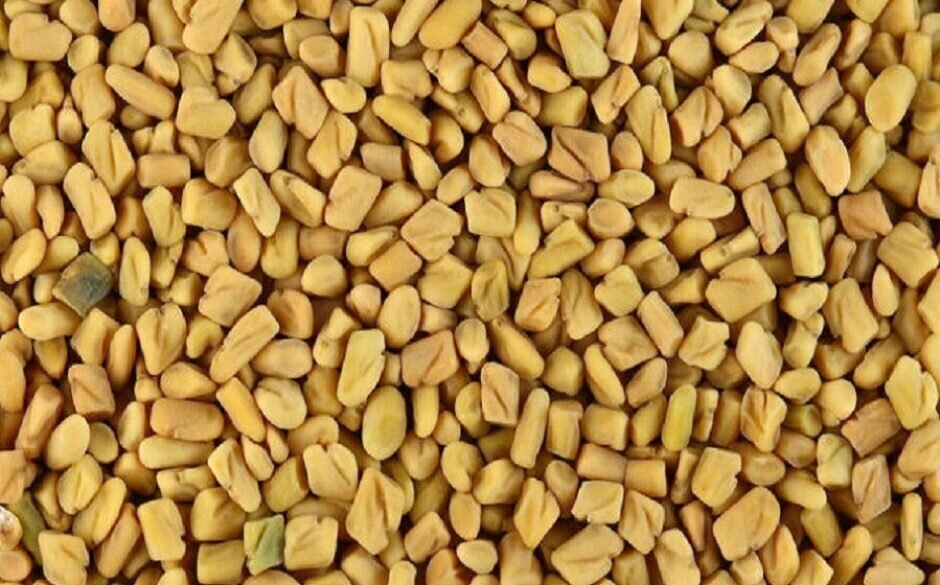
Ginger
Ginger, with its zesty and slightly spicy taste, is a versatile spice used widely in Indian cuisine. Its unique flavour comes from the compound gingerol. Ginger can be used fresh, grated, or in powdered form, adding a warm and peppery note to curries, teas, and baked goods. This Indian spice is also revered for its potential anti-inflammatory properties and is often used to alleviate digestive discomfort.
Good for:
- Stimulate circulation
- Ease bronchitis and congestion
- Treating nausea from motion sickness and morning sickness
- Ease muscle and joint pain
- Cleanse and detoxify the body
How to use:
Chop, grate, ‘julienne’ (matchstick-size pieces) or slice
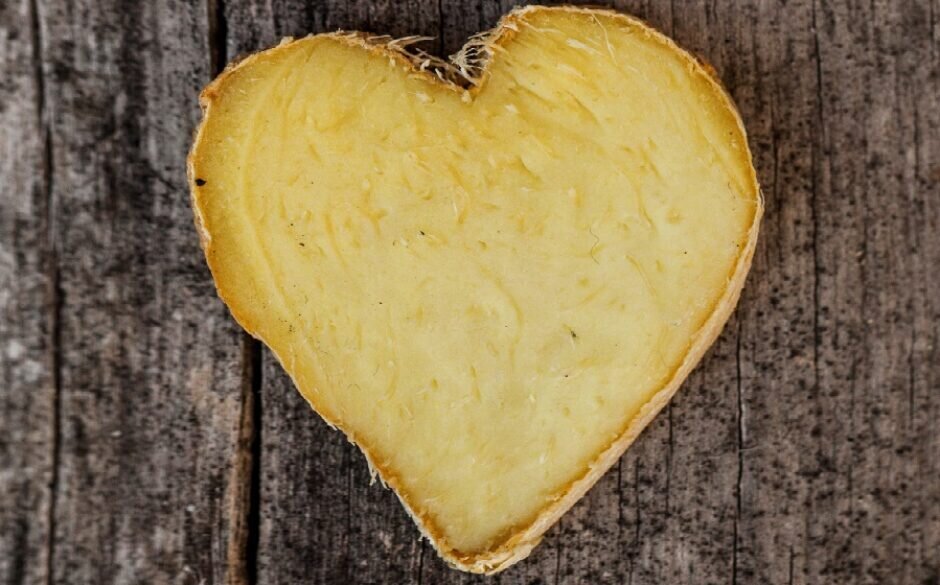
Hing (Asafoetida)
Hing, also known as asafoetida, is a resin derived from the roots of the Ferula species. It has a strong, pungent aroma and is used sparingly in Indian cooking. Hing is often added to hot oil or ghee at the beginning of cooking to release its savoury flavour. This Indian spice enhances the taste of lentil dishes, pickles, and vegetable curries. In traditional Ayurvedic medicine, hing is believed to aid digestion and reduce flatulence.
Good for:
- Anti-inflammatory properties
- Acts as a natural sedative
- Anti-bacterial properties
- An effective diuretic
How to use:
A latex gum extracted from a herb, the distinct flavour and aroma of hing transforms any dish, especially curries and dahls.
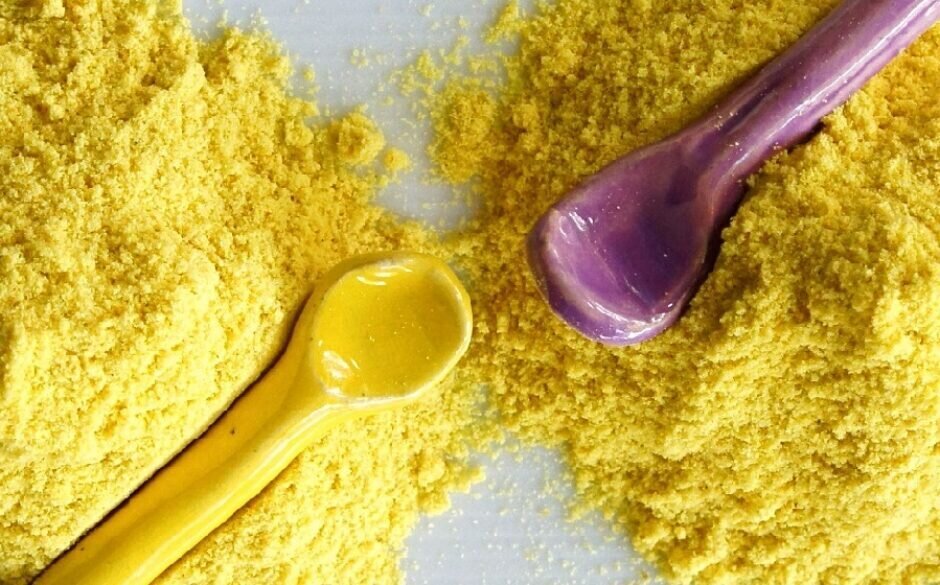
Mustard seeds
Mustard seeds are tiny, black or yellow seeds with a pungent flavour that adds depth to Indian dishes. When tempered in oil, they release a nutty aroma and a spicy kick. Mustard seeds are often used in pickles, chutneys, and curries, contributing both flavour and texture. They are also a good source of minerals and contain beneficial compounds like glycosylates, known for their potential anticancer properties.
Good for:
- Mustard oil is great for the skin as it generates warmth
- Anti-inflammatory properties
- Great for relieving migraines
- Increases metabolism and aids digestion
- Rich in calcium, manganese, omega-3 fatty acids, iron, zinc, protein and dietary fibre
How to use:
An essential in all Indian homes, mustard seeds are tossed in hot oil and added to pretty much any Indian dish you can think of!
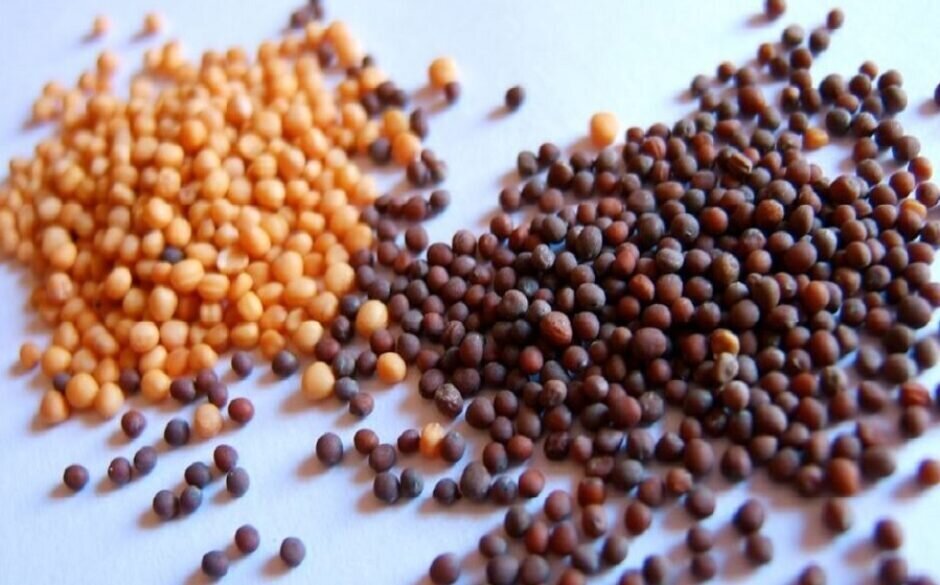
Star Anise
Star anise is a beautiful, star-shaped Indian spice with a liquorice-like flavour. It adds a sweet and aromatic touch to both savoury and sweet dishes. Star anise is a key ingredient in garam masala, a popular spice blend used in Indian cuisine. It is also used in biryanis, stews, and desserts. Beyond its culinary uses, star anise is known for its potential antimicrobial and antioxidant properties.
Good for:
- Carminative, stomachic, stimulant and diuretic properties
- Used to combat colic and rheumatism
- Common flavouring for medicinal teas, cough mixtures and pastilles
How to use:
Add whole to the cooking pot, or grind. Use sparingly as it’s strong!
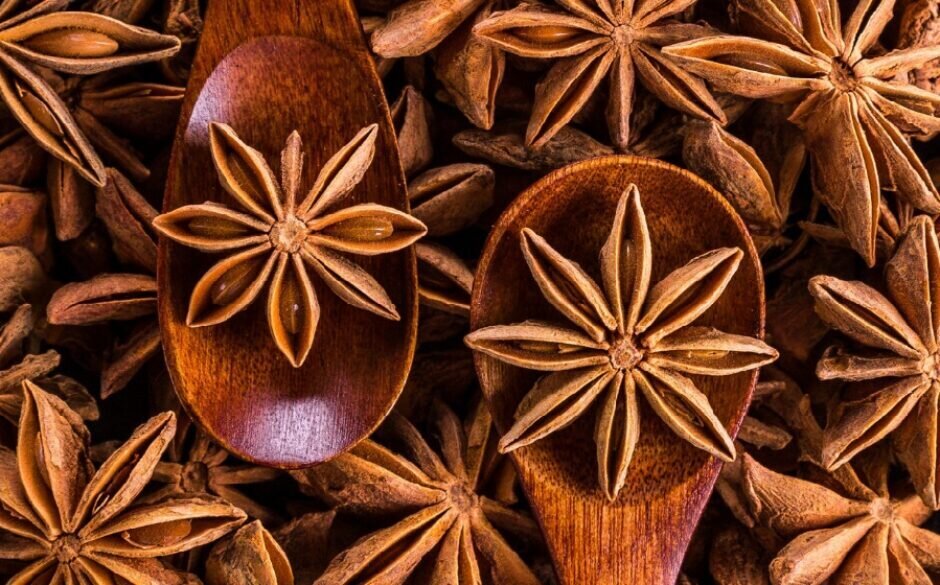
Tamarind
Tamarind is a tangy fruit that is widely used in Indian cuisine to add a sour and slightly sweet taste to dishes. It is available in pulp or concentrate form. Tamarind pulp is used in chutneys, sambar, and rasam, while the concentrate is often used in marinades and sauces. Apart from its flavour-enhancing qualities, tamarind is rich in vitamins and minerals and has been associated with potential digestive and antioxidant benefits.
Good for:
- Eases stomach discomfort, aids digestion and promotes better bowel movement.
- Helps relieve fever, sore throat, rheumatism, inflammation and heat stroke.
- Boiled or dried tamarind leaves and flowers are made into poultices for boils, conjunctivitis, haemorrhoids, sprains and swollen joints
How to use:
Remove the hard shell, simmer in a little liquid, then remove the flesh from the seeds and pod.
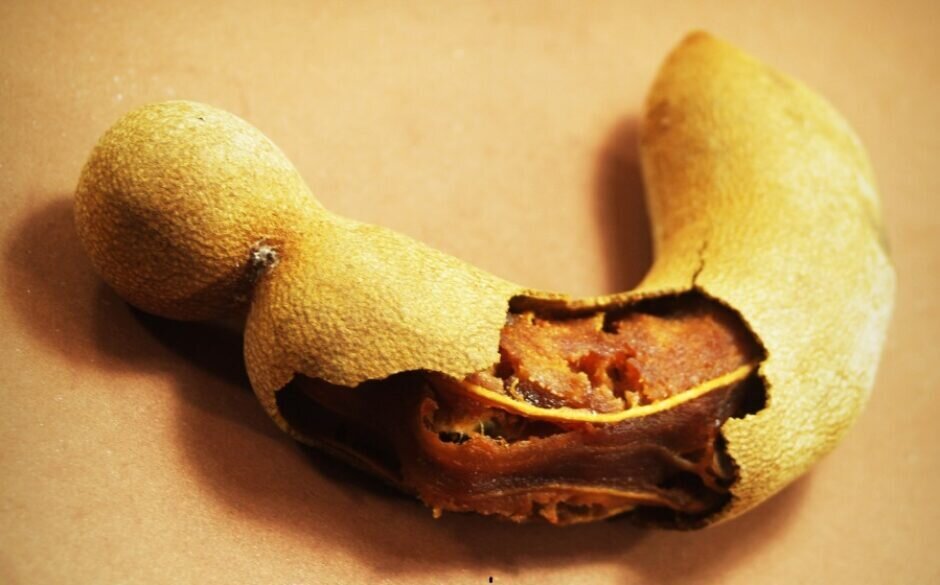
Turmeric
Turmeric, known as the “golden spice of India,” is a vibrant yellow powder derived from the rhizome of the Curcuma longa plant. It is widely used in Indian cooking for its distinct flavor and incredible health benefits. Turmeric lends a warm, slightly bitter taste to dishes and acts as a natural food colouring agent. The active compound of this Indian spice, curcumin, possesses powerful anti-inflammatory and antioxidant properties, making it a staple in traditional Ayurvedic medicine.
Good for:
- Regarded as a killer of evil spirits!
- Good for curing stomach ailments
- Can help ease skin infections
- May reduce inflammation
How to use:
Add a pinch to your dish for a lovely mild flavour and vibrant colour.
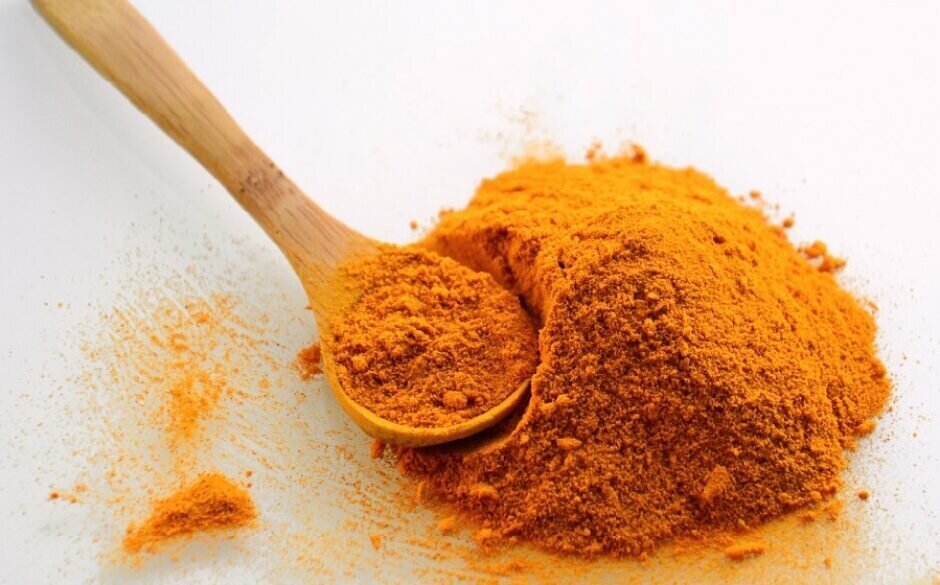
We hope you’ve enjoyed our favourite Indian spices and that they’ve inspired you to get creative in the kitchen!
Do you have a favourite recipe using these spices? We’d love to learn about it!
And to try these spices in the land they are used, why not learn more about our Culinary Tour to India?

